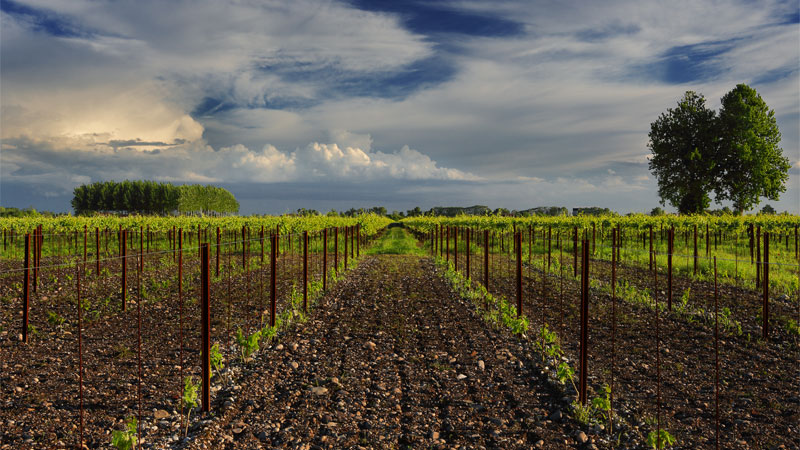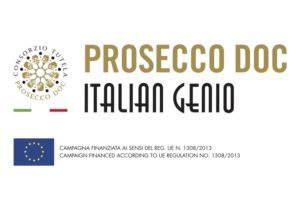
Springtime is the perfect season for bubbles, so keep an eye out for Italy’s beloved Prosecco DOC, which offers plenty of refreshing fruit and fizz — a combination that allows it to be an everyday indulgence.
The combination of flavor, refreshment, and value has made Prosecco a household name in recent years. Olly Smith, the British author of the forthcoming book “Fizz: 80 Joyful Cocktails and Mocktails for Every Occasion,” calls Prosecco an ideal pre-dinner drink.
“Prosecco has that delightful knack of feeling celebratory and informal at the same time,” Smith says. “Its fruity, light touch makes it a superb aperitif.”
While Prosecco is Italy’s most famous sparkling wine, not just any Italian sparkling can call itself Prosecco DOC. The wine enjoys a protected geographic designation label of DOC, short for Denominazione di Origine Controllata, or “controlled designation of origin.”
Named after the former village of Prosecco, now part of the Italian city of Trieste, Prosecco DOC is exclusively produced in a limited area of northeastern Italy. According to E.U. law, Prosecco can come from just nine provinces in two Italian regions, Veneto and Friuli-Venezia Giulia. The Prosecco-producing area is defined by its setting between the blue Adriatic Sea and the soaring Dolomite mountains.
The unique regional geography and microclimate help produce Prosecco’s characteristic fruit flavors. In addition, the grape-growing practices for Prosecco include highly traditional vine-training methods, using historic forms like the double-arched cane, the Sylvos or Sylvoz system, also known as the hanging cane, as well as Burgundy’s traditional Guyot vine-training method. These traditional forms help to create extremely aromatic fruit, often with rich notes of fresh apples, peaches, pears, and melon, as well as jasmine flowers, acacia blossoms, nuts, and fresh-baked bread.
Beyond Prosecco DOC, two additional geographic designations exist for special versions of the wine. The names Prosecco DOC Treviso and Prosecco DOC Trieste can also be used, but only if 100 percent of the grape harvest, winemaking, and bottling take place within the provinces of either Treviso or Trieste, respectively.
Regardless of which of the nine Italian provinces it comes from, all Prosecco must be made with at least 85 percent Glera grapes, the traditional variety formerly known as “Prosecco.” Glera is famous for its nut-brown vines and long, generous bunches of golden-yellow grapes. It is Glera that creates the delicate aromas of jasmine and orange blossom, as well as the notes of green apples, pears, citrus, and exotic fruit, and it is Glera that is responsible for the light, elegant body. While some Prosecco producers do make 100 percent Glera wines, the remaining 15 percent can include the familiar varieties Chardonnay, Pinot Bianco, Pinot Grigio, and Pinot Nero, or the more obscure local grapes Verdiso, Bianchetta Trevigiana, Perera, or Glera Lunga. Nothing else. These additional types help create structure and palate complexity.

If you’re ever unsure of what you’re drinking, bear in mind that it should be pretty easy to spot authentic Prosecco, as Italian law mandates a state sticker guaranteeing DOC status on the bottle opening itself, to prevent it from possibly being reused.
More importantly, real Prosecco is never sold in cans or on draft. With its E.U. quality-assurance standard, all Prosecco DOC must be produced and sold exclusively in glass bottles. Legally, the back of the bottle must also state the two phrases “Prosecco DOC” and “Product of Italy.” And remember that Prosecco must be a white wine: If you see a bar pouring ruby or pink sparkling wine, that’s definitely not Prosecco.
Prosecco is produced using the Charmat method (also known as “Charmat-Martinotti”), a process first developed in 1895 by Italy’s Federico Martinotti and improved a decade later by the Frenchman Eugène Charmat. Instead of producing the bubbles with the second fermentation in the bottle, a process sometimes used to produce the semi-sparkling version, the more modern method involves re-fermenting the wine in stainless steel tanks, where the bubbles are naturally created by the yeasts eating the sugar and creating CO2 and alcohol. Afterward the yeast is filtered out, and the sparkling wine is bottled.
That affordability can be especially practical if you’re using Prosecco as a mixer in warm-weather cocktails. The absolute classic? The Bellini, invented sometime before 1948 at the legendary Harry’s Bar in Venice. To make it, mix 2 ounces of fresh peach purée — preferably from white peaches — with 4 ounces of Prosecco.
You could also freshen things up with a Spritz Veneziano, a refreshing mix of Prosecco with a shot of Aperol, Campari, Cynar, or another bitter liqueur, topped with a splash of soda water. Or lighten your Negroni to a Sbagliato (or a “mistaken” version) by substituting 1 ounce of Prosecco for gin, and gently stirring in the sparkling wine with equal pours of Campari and sweet vermouth.

Although Prosecco is best known for its fizz and fruit, remember that both the amount of bubbles and sweetness can vary. Carbonation levels for sparkling Prosecco range from the bubbliest Spumante — the most famous version of Prosecco, with the most carbonation at over 3 bars of pressure — as well as the more subtle Frizzante, with lighter and less persistent bubbles between 1 and 2.5 bars of pressure. Additionally, connoisseurs of Italian wine know that there is also a still — meaning bubble-free — Prosecco called Tranquillo.
In terms of sweetness, pick a Prosecco to match your food or your mood. The driest is Brut, with less than 12 grams per liter of residual sugar, followed by Extra Dry, which has 12 to 17 grams of sugar per liter. Prosecco Dry contains 17 to 32 grams per liter, followed by the sweetest, Demi-Sec, with 32 to 50 grams of residual sugar per liter.
Whichever version of Prosecco you choose, today is a great day to indulge in a glass. Tomorrow and the next day will be, too.
What better time to reach for a glass of Prosecco DOC than during National Prosecco Week, which runs June 3-9, 2019! Learn more about National Prosecco Week events, in-store opportunities, by-the-glass Prosecco specials and more at CasaProsecco.
This article is sponsored by Prosecco DOC.

